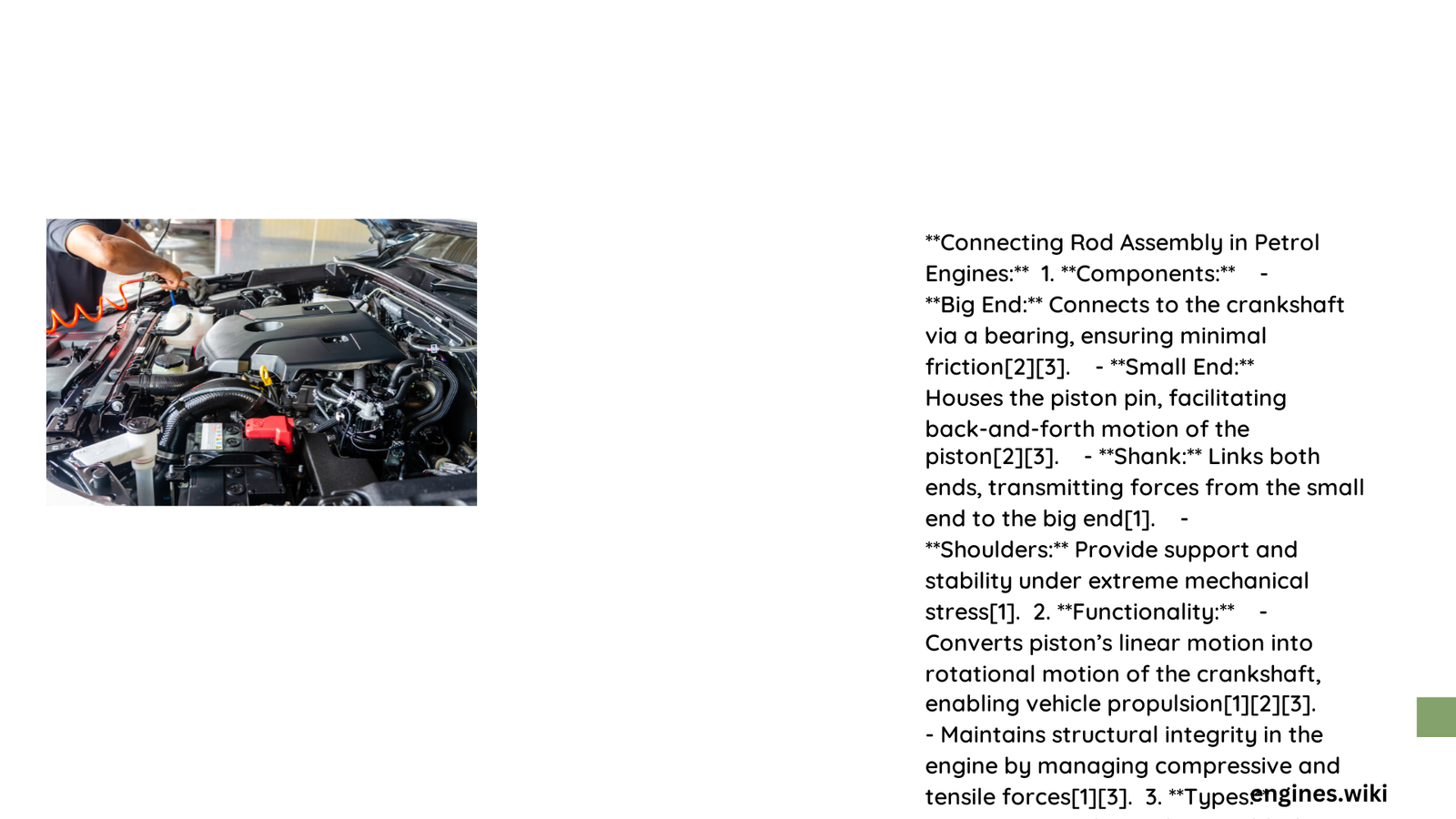A connecting rod assembly represents a critical mechanical linkage in petrol engines, transforming reciprocating piston motion into rotational crankshaft movement. This precision-engineered component plays a fundamental role in converting combustion energy into mechanical power, requiring meticulous design, material selection, and manufacturing tolerances to ensure optimal engine performance and durability.
What Makes Connecting Rod Assembly Critical in Petrol Engines?
Core Functional Dynamics of Connecting Rods
Connecting rods serve as the crucial mechanical bridge between pistons and crankshaft, translating linear motion into rotational energy. Their design and construction directly impact engine efficiency, power output, and overall mechanical reliability.
Key Performance Parameters
- Dimensional Precision: Critical for maintaining proper engine geometry
- Material Strength: Determines load-bearing capacity
- Weight Optimization: Influences engine responsiveness and fuel efficiency
What Are the Primary Material Considerations?
| Material Type | Strength | Weight | Performance Characteristics |
|---|---|---|---|
| Forged Steel | High | Moderate | Excellent durability |
| Titanium | Very High | Lightweight | Superior performance |
| Aluminum | Moderate | Lightweight | Limited high-stress applications |
How Do Connecting Rods Transform Mechanical Energy?
The connecting rod undergoes complex stress cycles during engine operation:
1. Compression stroke: Transfers combustion pressure downward
2. Power stroke: Converts explosive force into rotational motion
3. Exhaust and intake strokes: Manages piston return and valve interactions
What Design Factors Influence Rod Performance?
Structural Considerations
- Length-to-Diameter Ratio: Impacts stress distribution
- Cross-sectional Geometry: Determines load-bearing capabilities
- Surface Treatments: Enhances wear resistance
How Are Connecting Rods Manufactured?
Manufacturing processes involve precision machining:
– Forging: Creates strong, uniform grain structure
– Machining: Ensures tight dimensional tolerances
– Heat Treatment: Enhances material properties
– Surface Finishing: Reduces friction and improves durability
What Maintenance Strategies Ensure Longevity?
Inspection Protocols
- Regular visual examination
- Measure bearing clearances
- Check for unusual wear patterns
- Monitor bolt tension and alignment
What Failure Modes Should Engineers Monitor?
Critical failure indicators include:
– Excessive bearing wear
– Unexpected dimensional changes
– Abnormal noise during operation
– Reduced engine performance
Emerging Technologies in Connecting Rod Design
Advanced Development Trends
- Computer-aided design optimization
- Lightweight composite materials
- Advanced computational stress analysis
- Additive manufacturing techniques
Conclusion

Connecting rod assembly represents a sophisticated engineering marvel, balancing complex mechanical requirements with precision manufacturing. Continuous technological advancements promise further improvements in performance, efficiency, and reliability.
